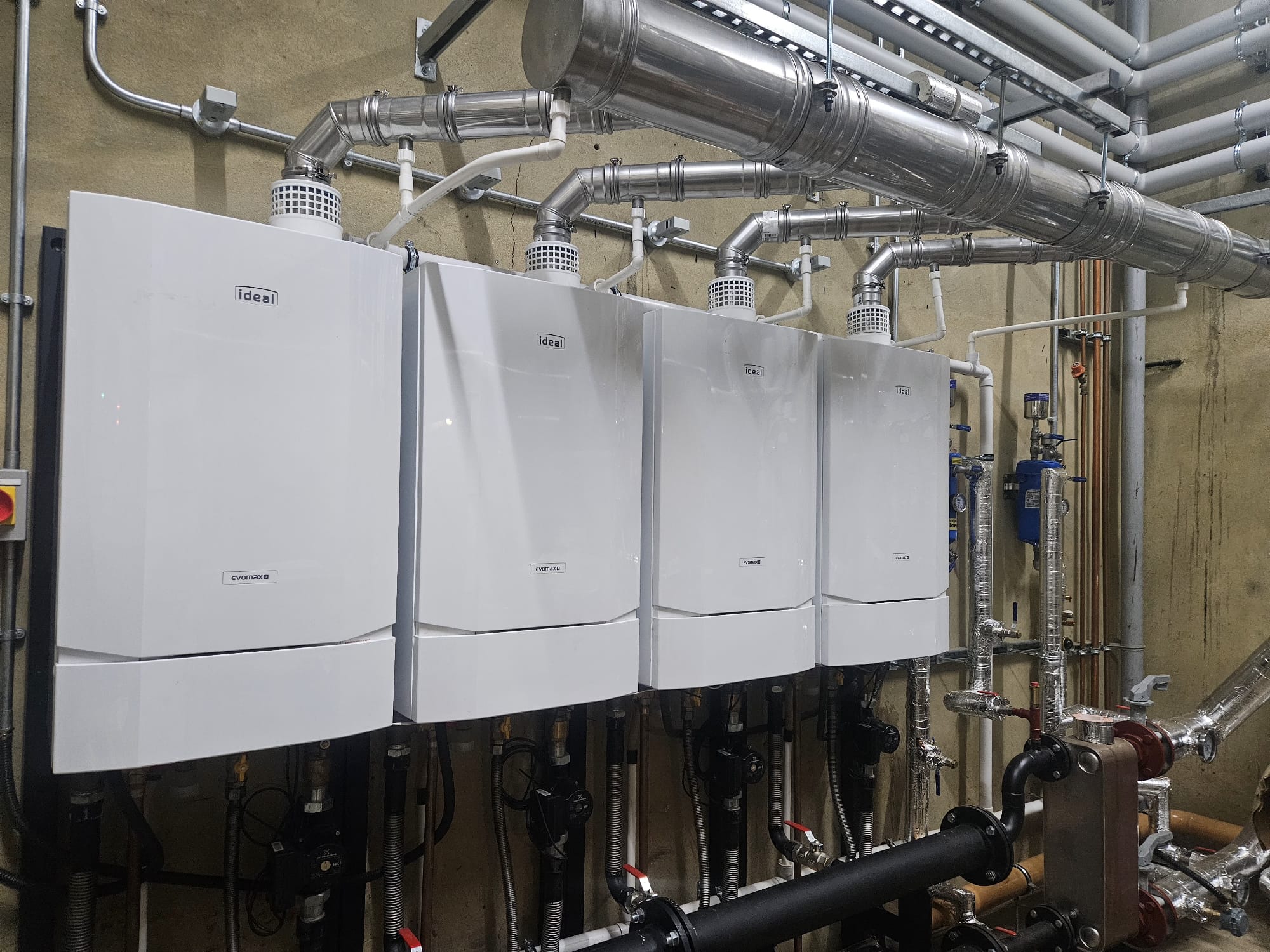Commercial heating systems are designed to provide reliable, consistent heat to large or complex buildings
Commercial heating systems are designed to provide reliable, consistent heat to large or complex buildings such as offices, warehouses, schools, hospitals, hotels, and industrial facilities. The installation of these systems involves selecting the right equipment, planning the distribution of heat, and ensuring compliance with safety and energy efficiency standards.
Complete Commercial Heating System Installations
At Neem Mechanical, we specialize in the professional installation of high-performance boiler heating systems for high end residential, commercial properties, public sector and industrial facilities. Whether you’re upgrading an outdated system, installing a new system, or switching to a more energy-efficient heating solution, our experience ensures a smooth, safe, and reliable installation every time.
We work with leading boiler manufacturers to match your building’s size, layout, and energy requirements as per specification requirements, from installation to commissioning we deliver long-term comfort, with commercial awareness to energy cost saving.

How a Boiler Heating System Works
Key Components of a Boiler Heating System
- Heat Generation: The boiler heats water using natural gas, oil, electricity, or biomass as fuel.
- Heat Distribution: Hot water flows to radiators, radiant panels, underfloor heating or fan coil units.
- Heat Transfer: The heat radiates into the space, warming the room.
- Return Flow: Cooled water returns to the boiler to be reheated.
- Temperature Control: A thermostat regulates the system to maintain the desired temperature.
- Boiler Unit: The main plant where water is heated.
- Burner: Ignites the fuel to generate heat.
- Heat Exchanger: Transfers heat from the burner to the water.
- Pump (Circulator): Moves hot water through the pipework.
- Expansion Tank: Absorbs pressure changes from heated water expansion.
- Piping System: Carries hot water or steam to heating elements and returns it to the boiler
- Radiators / Underfloor Coils/fan coil units: Distribute heat into areas.
- Flue or Venting System: Expels combustion gases safely outdoors.
- Thermostat: Controls and maintains the desired indoor temperature.
- Pressure Relief Valve: Prevents excessive pressure buildup in the system.
